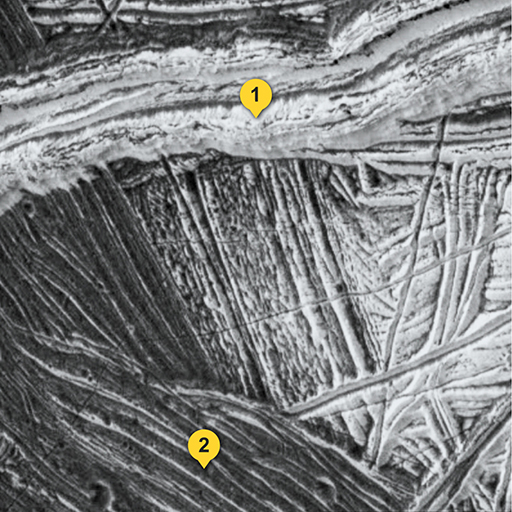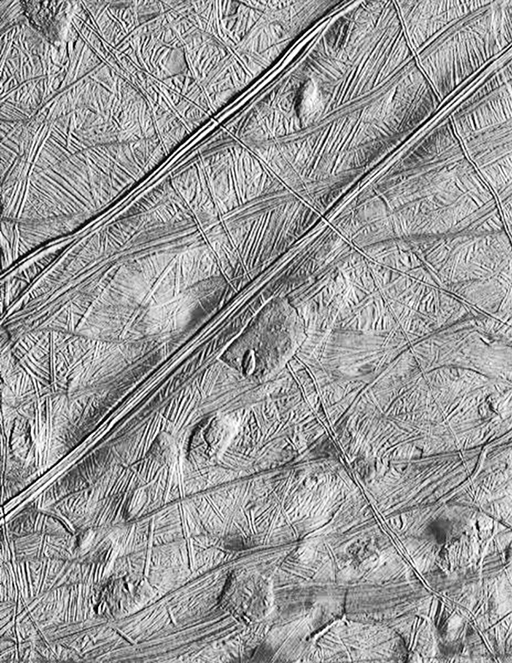2.9 Eruption plumes on Europa?
No visiting spacecraft has seen eruption plumes at Europa like those on Enceladus. However an exciting discovery was announced in December 2013. The Hubble Space Telescope, in orbit about the Earth, had found a faint ultraviolet glow caused by atoms of hydrogen and oxygen rising up to 200 km above Europa’s south pole in December 2012. This probably shows water molecules broken apart in the harsh space environment.

Europa’s plumes are not persistent. Repeat attempts at detection using the same method throughout 2014 were blank. However in 2016 it was announced that by using the Hubble Space Telescope’s ultraviolet camera to watch Europa as it crosses the face of Jupiter, absorption of the sunlight reflected from Jupiter could be detected as it passed parts of Europa’s limb (the edge of its disc). This is most simply explained as plumes blocking out a tiny fraction of the light. The technique found plumes on three occasions out of ten during 2014.
If eruption plumes do indeed occur at Europa, they seem to be less persistent than those currently occurring at Enceladus. Perhaps water escapes in plumes only when certain special cracks in Europa’s ice shell are open.
See also: Europa plumes seen by a new technique (2016 report). [Tip: hold Ctrl and click a link to open it in a new tab. (Hide tip)] An account of plumes detected as Europa transits Jupiter’s disc.
Activity 2 Identify features on Europa for yourself
Now explore these surface features of Europa.
This is a 20-km wide image of part of Europa where the surface is made of ‘ball-of-string’ terrain. Which region do you think is older: the bright region or the dark ‘ball-of-string’ region?
This is an 80-km wide region of Europa. It is mostly ‘ball-of-string’ terrain, but this has been warped or disrupted by doming from below. Most domes are 5–10 km across. See if you can identify some domes, and then see what we found.
This is a 15-km wide image of ‘ball-of-string’ terrain in Europa. There is one place where a ridge with a central groove has been offset by sideways slip along a fault. Try to find this, and estimate the amount of offset before you click to reveal the annotated version.
This image, roughly 34 km by 42 km, is part of a ‘chaos’ region consisting of rafts of ice that have broken apart and drifted into new positions before the slushy matrix between the rafts refroze. See if you can distinguish between rafts (still bearing ‘ball-of string’ texture) and matrix (representing the refrozen exposed ocean that was temporarily exposed as the rafts drifted apart), before you click to reveal the annotated version.
Answer
We have outlined the largest raft (which has neighbours close by to which it could be refitted without too much movement) and circled two other rafts that are more isolated. There are plenty of other rafts in this image. Shadows show that their surface is 100–200 m above the matrix. The matrix is a jumbled mess, lacking ‘ball-of-string’ texture, although there is a groove running through the matrix diagonally from the lower right corner that must have formed after the matrix refroze. Eventually, after many more grooves have formed, the matrix may become indistinguishable from ‘ball-of-string’ terrain.








